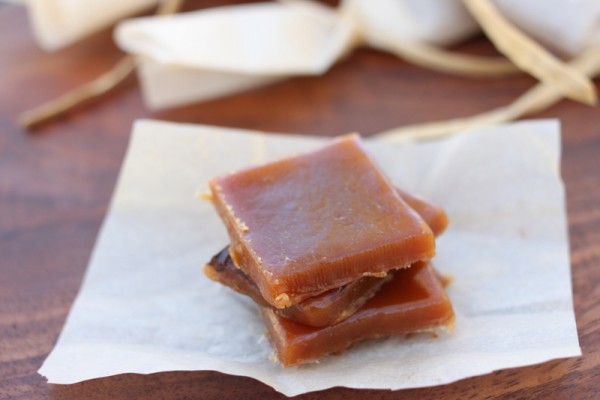 Maybe you are snowed in with a little extra cream from holiday baking. Or you want to master the art of candy making. Perhaps you want to impress someone with the most delightful sweet bite at the end of a meal. Maybe you have some fantastic honey to highlight.
I adapted this recipe because I had excess expiring Snowville cream I couldn't let go to waste. Caramels sounded good but I could find precious few recipes without corn syrup. I'm not rabidly against corn syrup but I don't choose to keep it around the house. I also wanted to practice candy-making. I am inconsistent because I typically become distracted with another chore or are trying to manage too many things in the kitchen at one time.
Maybe you are snowed in with a little extra cream from holiday baking. Or you want to master the art of candy making. Perhaps you want to impress someone with the most delightful sweet bite at the end of a meal. Maybe you have some fantastic honey to highlight.
I adapted this recipe because I had excess expiring Snowville cream I couldn't let go to waste. Caramels sounded good but I could find precious few recipes without corn syrup. I'm not rabidly against corn syrup but I don't choose to keep it around the house. I also wanted to practice candy-making. I am inconsistent because I typically become distracted with another chore or are trying to manage too many things in the kitchen at one time.
I started by making butter by hand to use up more of the cream. I waited patiently while sugar and butter roiled on the stove until the exact right temperature. I even remembered to let the hot sugar cool before tasting - no burnt tongue!
The results were worth the effort. These caramels are soft and chewy but not pull-your-fillings-out sticky. They smell floral from the honey and surround the taste buds with richness. Whatever your reason, you will not be sorry after you spend an evening cooking caramels.
Soft Caramels adapted from Chez Pim Makes: 40-50 1 1/2 inch squares Time: 30-50 minutes
1 1/2 cups granulated cane sugar 1/2 cup honey 1 cup heavy cream 1/2 cup sweet cream butter (make by shaking approximately 2 cups room-temperature cream in a quart jar and skimming butter from buttermilk or use unsalted butter) 1 generous pinch salt 1/4 cup finely chopped chocolate (optional) parchment paper
1. Mix sugar and honey in a heavy-bottomed pot. Heat over medium until the mixture is melting, swirling the pan to stir without using a utensil. Continue to cook until the sugars have caramelized to a deep brown.
2. Meanwhile, in another heavy-bottomed pot, slowly heat cream to a simmer.
3. Whisk butter in small pieces into the sugar and honey. When it is totally incorporated, whisk in the cream and salt as well.
4. Cook over medium heat until the mixture measures 255F with a candy thermometer. Do not stir. This may take up to 15 minutes of boiling - be patient and keep cool water nearby in case you accidentally touch a splatter.
5. Meanwhile, line a cookie sheet or baking dish with parchment paper.
6. When the candy reaches 255F, pour onto the parchment-lined pan. If using chocolate, sprinkle over the top after 10 minutes of cooling.
7. Allow the caramel to cool completely. Cut with a serrated steak knife and wrap in parchment squares or layer between parchment paper in a covered container. Consume within 7 days for best texture.

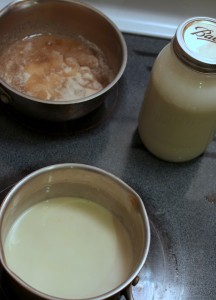
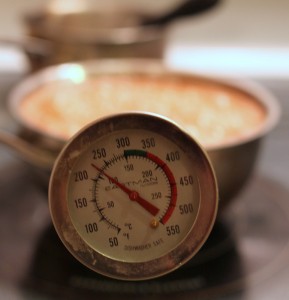
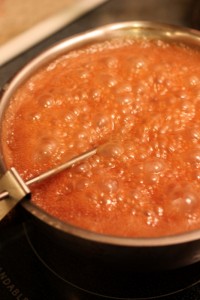
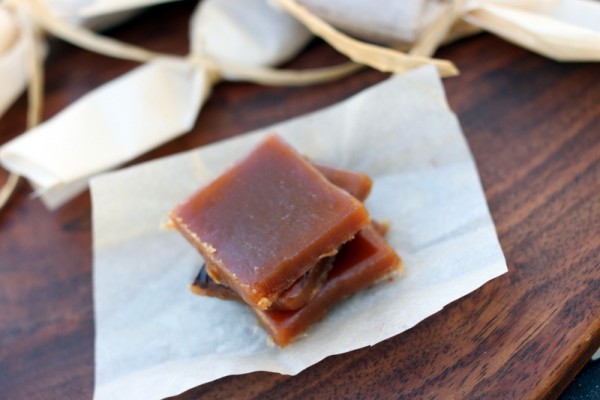

 Yesterday we collected the first egg from our
Yesterday we collected the first egg from our  Today we collected another egg. This time we saw an Orpington in the nesting box so it surely came from her.
Today we collected another egg. This time we saw an Orpington in the nesting box so it surely came from her.






